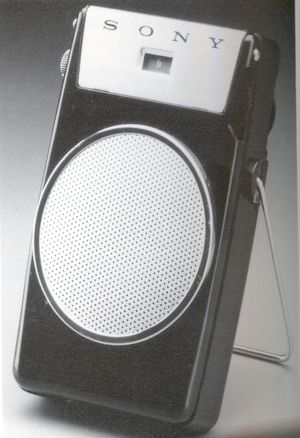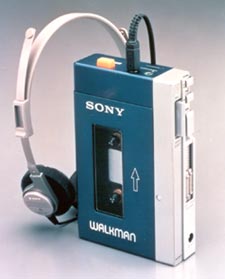The Transistor and Portable Electronics: Difference between revisions
No edit summary |
No edit summary |
||
| Line 3: | Line 3: | ||
<br>Prior to the 1947 invention of the transistor, “portable” electronics were anything but portable. While people longed to take radios with them on trips, the reality of using large vacuum tubes for sound amplification made it virtually impossible. The transistor, an electronic device for amplifying an electronic signal, began a revolution within the electronic components industry. Their tiny size, reliability, and durability enabled manufacturers to shrink the size of electronics and thereby make electronics truly portable. | <br>Prior to the 1947 invention of the transistor, “portable” electronics were anything but portable. While people longed to take radios with them on trips, the reality of using large vacuum tubes for sound amplification made it virtually impossible. The transistor, an electronic device for amplifying an electronic signal, began a revolution within the electronic components industry. Their tiny size, reliability, and durability enabled manufacturers to shrink the size of electronics and thereby make electronics truly portable. | ||
One of the earliest successes was the transistor radio. Regency, a small Indianaopilis based firm, introduced the first commercial transistor radio in time for the 1954 holiday season. It was based on a design by the Texas [[Image: | One of the earliest successes was the transistor radio. Regency, a small Indianaopilis based firm, introduced the first commercial transistor radio in time for the 1954 holiday season. It was based on a design by the Texas [[Image:1958 Sony transistor.jpg|thumb|1958 transistor radio. Courtesy Sony Corporation]]Instruments Corporation, which manufactured most of the electronic components. . Also, in the early 1950s, a representative of the Totsuko Corporation (which was later renamed SONY) traveled to the United States to find out about transistors. The representative walked away convinced of the transistor’s potential. SONY introduced its first transistor radio in 1955. Quickly, dozens of other companies brought transistor radios to the market and the era of low-cost, mass-market, portable consumer electronics had begun. | ||
The ramifications of the transistor radio and portable products were immense. Transistor radios revolutionized the way people listened to music. Radios, which only a decade before were often the size of a piece of furniture, could now be toted around. Away from the eyes and ears of their parents, teenagers could listen to whatever they chose, wherever they chose. They frequently chose rock and roll music, which itself was just beginning to reach a mainstream audience. The growth of this new music was encouraged by the transistor radio. | The ramifications of the transistor radio and portable products were immense. Transistor radios revolutionized the way people listened to music. Radios, which only a decade before were often the size of a piece of furniture, could now be toted around. Away from the eyes and ears of their parents, teenagers could listen to whatever they chose, wherever they chose. They frequently chose rock and roll music, which itself was just beginning to reach a mainstream audience. The growth of this new music was encouraged by the transistor radio. | ||
| Line 13: | Line 13: | ||
<br> | <br> | ||
< | <br> | ||
[[Category:Business,_management_&_industry|Category:Business,_management_&_industry]] [[Category:Business]] [[Category:Culture_and_society]] [[Category:Leisure]] | [[Category:Business,_management_&_industry|Category:Business,_management_&_industry]] [[Category:Business]] [[Category:Culture_and_society]] [[Category:Leisure]] | ||
Revision as of 14:31, 17 September 2008
The Transistor and Portable Electronics
Prior to the 1947 invention of the transistor, “portable” electronics were anything but portable. While people longed to take radios with them on trips, the reality of using large vacuum tubes for sound amplification made it virtually impossible. The transistor, an electronic device for amplifying an electronic signal, began a revolution within the electronic components industry. Their tiny size, reliability, and durability enabled manufacturers to shrink the size of electronics and thereby make electronics truly portable.
One of the earliest successes was the transistor radio. Regency, a small Indianaopilis based firm, introduced the first commercial transistor radio in time for the 1954 holiday season. It was based on a design by the Texas
Instruments Corporation, which manufactured most of the electronic components. . Also, in the early 1950s, a representative of the Totsuko Corporation (which was later renamed SONY) traveled to the United States to find out about transistors. The representative walked away convinced of the transistor’s potential. SONY introduced its first transistor radio in 1955. Quickly, dozens of other companies brought transistor radios to the market and the era of low-cost, mass-market, portable consumer electronics had begun.
The ramifications of the transistor radio and portable products were immense. Transistor radios revolutionized the way people listened to music. Radios, which only a decade before were often the size of a piece of furniture, could now be toted around. Away from the eyes and ears of their parents, teenagers could listen to whatever they chose, wherever they chose. They frequently chose rock and roll music, which itself was just beginning to reach a mainstream audience. The growth of this new music was encouraged by the transistor radio.
The love of portable products has only escalated since their introduction in the 1950s. Few could live without their iPods, cell phones, PDAs, and pagers. Each of these products contain millions of transistors that are now mapped onto tiny wafers called integrated circuits, or more commonly, chips.

